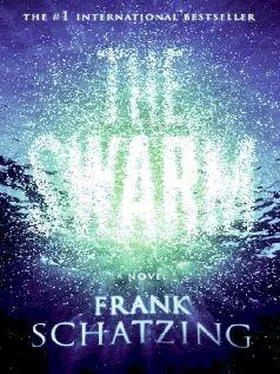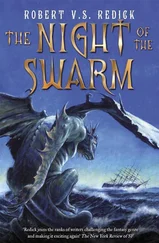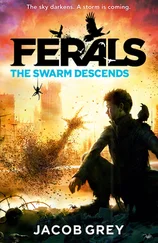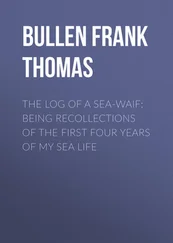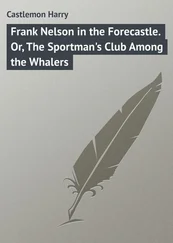Fenwick was there for the autopsy. As soon as they'd heard that Genghis was dead, Ford had suggested that the dissection should be conducted on the beach, where the carcass had been found, rather than behind closed doors. He wanted to drum up a large group of students and journalists and give them an insight into the orca's anatomy. 'Besides,' he'd said, 'the autopsy will look different in the open – less clinical and distant. We'll be staring at the corpse of an orca close to the sea – in its own world. People will be more involved, more compassionate. It's a gimmick, of course, but it'll work.'
They'd thrashed it out between them: Ford, Fenwick, Anawak and Rod Palm, a naturalist from the marine research station on Strawberry Isle, off the coast of Tofino. Palm and the Strawberry Isle team monitored the ecosystem in Clayoquot Sound, and Palm had made a name for himself by studying the orcas there.
'The external evidence suggests that it succumbed to a bacteriological infection,' said Fenwick, when Anawak pressed him, 'but I don't want to rush to any hasty conclusions.'
'You don't have to,' said Anawak grimly. 'Remember 1999? Seven dead orcas, and all of them infected.'
"The Torture Never Stops",' murmured Oliviera, recalling an old Frank Zappa song. She nodded conspiratorially at Anawak. 'Come with me a second.'
Anawak followed her over to the carcass. Two large metallic cases and a container had been placed beside it, full of tools for the autopsy. Dissecting an orca was a different matter from dissecting a human. It meant hard work, vast quantities of blood and one hell of a stench.
'The press will be here in a moment, with the students,' she said, glancing at her watch, 'but since we're together, we should have a word about those samples.'
'Made any headway?'
'Some.'
'And you're keeping Inglewood in the picture?'
'I thought you and I should talk first.'
'Sounds like you haven't reached any firm conclusions.'
'Put it this way, we're amazed on one count and stumped on the other,' said Oliviera. 'For one thing, the mussels aren't described in any of the existing research.'
'I could have sworn they were zebras.'
'On the one hand, yes, but on the other, no.'
'Fill me in.'
'There are two ways of looking at it. We're either dealing with a species related to the zebra mussel or with a mutation. They look like zebra mussels and they form colonies like zebra mussels, but there's something odd about the byssus. The fibres extending from the foot are unusually thick and long. We've nicknamed them "jet mussels".' She pulled a face. 'We couldn't come up with anything better. We've observed a number of living specimens, and they're able to. . . Well, they don't just drift like normal zebra mussels. They set their course by sucking in water and expelling it. The force drives them forwards, and they use their fibres to steer. Does that remind you of something?'
'Squid use jet propulsion.'
'Well, some species do, but there's something else. I was thinking of dinoflagellates, unicellular organisms. In certain species, the cells have a pair of flagella extending outwards from the cell wall. They use one flagellum to steer, while the other rotates, moving them forward.'
'But apart from that they've got nothing in common.'
I'm treating it as convergent evolution in a very broad sense. At this stage, I need every lead I can get. As far as I know, no other species of mussel moves around like that. These swim like shoaling fish, and they can keep up their momentum, in spite of the weight of their shells.'
'Well, that would explain how they settled on the Barrier Querns hull in the middle of the ocean,' mused Anawak. 'Is that the amazing part?'
'Right.'
'What's stumped you?'
Oliviera stepped closer to the dead whale and stroked its skin. 'The fragments of tissue you found down there. We don't know what to do with them – and there's not much we can do. For the most part it had already decomposed. The small amount that we were able to analyse seemed to indicate that the substance on the propeller and the substance on your knife were identical. Apart from that, it bore no resemblance to anything we've ever come across before. The tissue is unusually well developed in terms of its contractibility. It's incredibly strong, but also extremely elastic. We don't know what it is.'
'Could that be an indication of bioluminescence?'
'Possibly. Why?'
'Because it flashed at me.'
'You're talking about the thing that knocked you over?'
'Yeah. It shot out while I was poking around in the mussel bed.'
'Maybe because you'd cut a lump out of it. Although I can't believe this tissue contains nerve fibres or anything else that might make it feel pain. It's really just… cell mass.'
They heard voices approaching. Across the sand, a group of people were heading towards them, some with cameras, others with notepads.
'We're on,' said Anawak.
'OK.' Oliviera looked at him helplessly. 'But what do you want me to do? Should I forward the results to Inglewood? I can't imagine they'll be of any use. I'd rather look at a few more samples – especially of that tissue.'
'I'll get in touch with Roberts.' Anawak stared at the orca, depressed.
First the whales had disappeared for weeks, and now there was another corpse. 'Why did this have to happen? It's such a mess.'
Oliviera shrugged. 'Save your lamentations for the press,' she said.
THE AUTOPSY TOOK MORE than an hour, during which Fenwick, assisted by Ford, cut open the whale and explained its anatomical structure, exposing its intestines, heart, liver and lungs. Its stomach revealed a half-digested seal. Unlike the resident orcas, transient and offshore orcas ate sea-lions, porpoises and dolphins – even baleen whales could fall prey to a pod of orcas.
Specialist science journalists were in the minority among the spectators, but reporters from the broadsheets, magazines and TV networks were out in force – exactly the sort of people the team had hoped to attract.
Fenwick started by explaining the distinguishing features of an orca's anatomy. 'As you can see, its shape resembles that of a fish, but that's because nature adopted this body form for sea creatures that have evolved from land animals. It happens a lot. We call it convergent evolution: in order to cope with similar environmental pressures, two totally different species develop convergent structures – that is, structures designed to solve the same problem.'
He removed sections of the thick outer skin to expose the layer of fat. Fish, amphibians and reptiles are ectotherms, which means they're cold-blooded, so their body temperature corresponds to that of their surroundings. Mackerel, for example, are present in the Arctic Ocean and in the Mediterranean. In the Arctic their body temperature is four degrees Celsius, but in the Med it's twenty-four. The same doesn't apply to whales: they're warm-blooded, like us.'
Fenwick had uttered two little words that never failed to hit their mark. As soon as the spectators heard them, they sat up and paid attention.
Fenwick continued, 'They could be swimming in the Arctic or in the Baja California, it makes no difference. Wherever they are, whales have a constant body temperature of thirty-seven degrees, and to maintain it they accumulate the layer of fat we call blubber. See this white, fatty mass? Water normally draws heat away from the body, but this layer of fat prevents it happening.'
His gloves were red and slimy with the orca's blood and fat.
'But blubber can also be fatal to a whale. The reason they die when they get stranded is because of their weight, due in part to their magnificent fat layers. A blue whale measuring thirty-three metres and weighing a hundred and thirty tonnes is four times heavier then the biggest dinosaur that ever walked the Earth. Even an orca can weigh up to nine tonnes. Creatures of that size can only survive in water. It all comes down to Archimedes' principle, which states that the weight of a body immersed in fluid will decrease by an amount equal to the weight of the fluid it displaces. On land, whales are crushed to death by the pressure of their own weight- if they haven't already been killed by the insulating effect of their blubber, which absorbs the heat of the environment. Beached whales often die of overheating.'
Читать дальше
